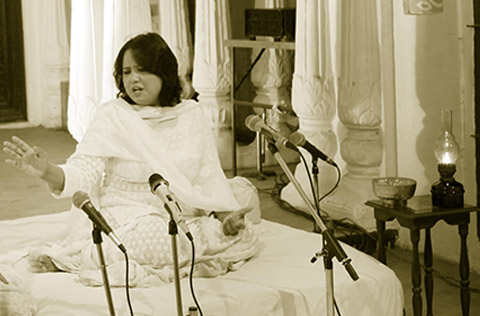
DASTANGOI
Dastangoi is the ancient art of oral Urdu storytelling, considered to have originated in the 13th century.
Dastangoi has its origin in the Persian language and some people still believe that this art form actually originated in the 9th century Iran. However, there is no confirmation of this aspect as yet. Dastan means a tale and the suffix -goi makes the word mean "to tell a tale" i.e. storytelling in normal understanding.
One of the earliest references to Dastangoi can be found in The Hamzanama (Epic of Hamza) or Dastan-e-Amir Hamza (Adventures of Amir Hamza), which contains 46 volumes and has approximately 48000 pages. Dastan-e-Amir Hamza narrates the legendary exploits of Amir Hamza, an uncle of Muhammad (PBUH), though most of the stories and characters are fictitious. Generally, this work is best known for the enormous illustrated manuscript commissioned by the Mughal Emperor Akbar in about 1562. Hence, since its inception in the 13th century, this style of oral storytelling further evolved in the 16th century.
The last great Dastango, Mir Baqir Ali, was born in 1850 in the Pahari Bhojla locality of Old Delhi. (Coincidentally, Fouzia Dastango is also born and brought in the same locality of Old Delhi). Mir Baqir Ali was supposedly the last in a long line of Persian dastangos and was trained in the art by his uncle Mir Kazim Ali. With this demise in 1928, in the same Pahari Bhojla locality, the form almost died and vanished from the Indian sub-continent.
